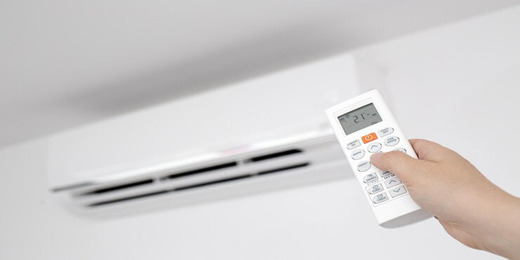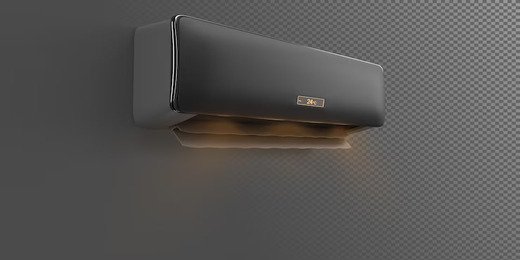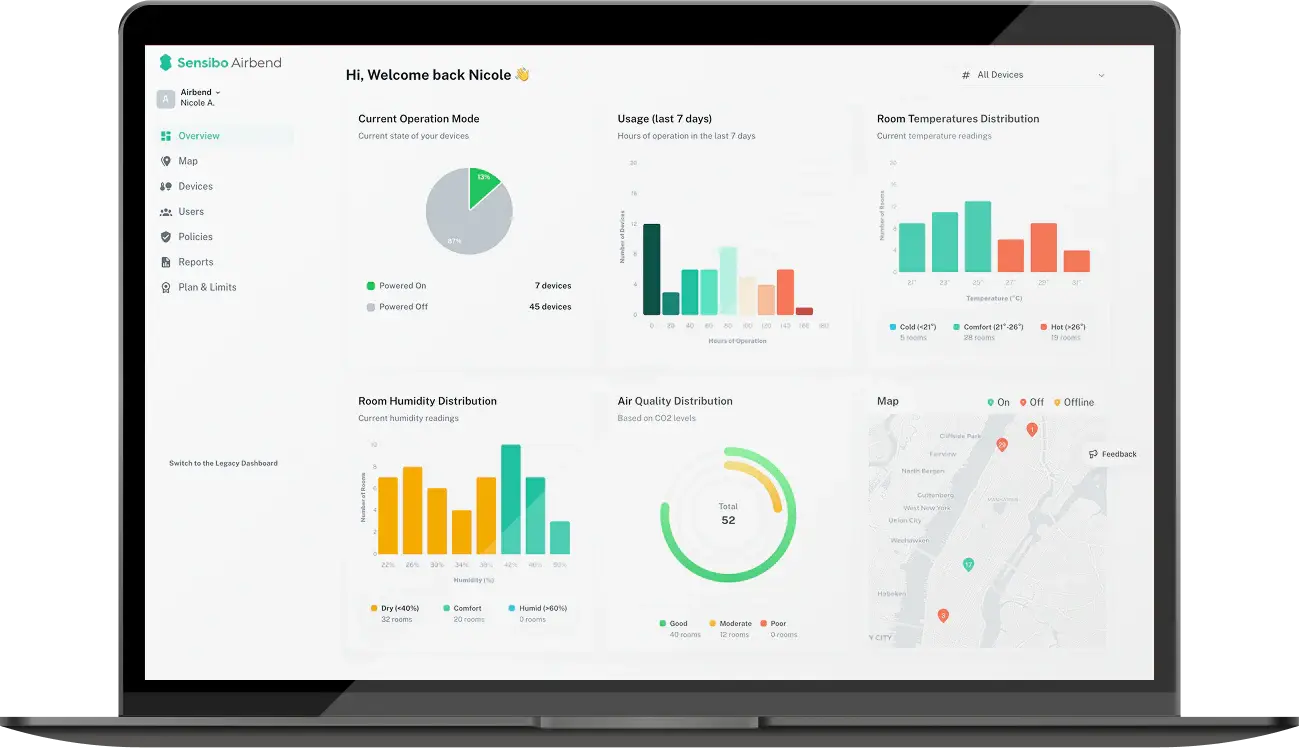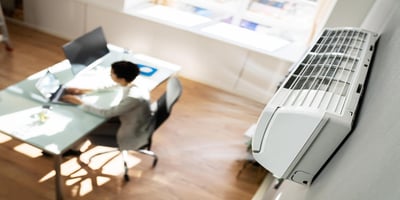Dry Setting vs. Cooling Mode: When and Why to Use Each
Key Takeaways
- Dry Setting Excels at Humidity Control with Energy Savings: The dry setting operates by running the compressor at reduced capacity to remove excess moisture from indoor air while maintaining stable temperatures. This makes it more energy-efficient than cooling mode and ideal for combating sticky, uncomfortable conditions during humid weather without excessive cooling.
- Cooling Mode Provides Rapid Temperature Reduction for Extreme Heat: Cooling mode is the standard air conditioning function that prioritizes aggressive temperature reduction through full compressor operation. It's most effective during scorching hot days, for initial room cooling, or when you need to bridge significant temperature differences between indoor and outdoor environments.
- Strategic Setting Selection Depends on Climate Conditions: Choose dry setting during high humidity but moderate temperature conditions, especially for sleeping or relaxation. Opt for cooling mode when facing extreme heat or when rapid temperature reduction is necessary. Understanding your local climate patterns helps optimize comfort and efficiency.
- Combining Both Settings Maximizes Comfort and Efficiency: The most effective approach often involves using both settings strategically - start with cooling mode for quick temperature reduction, then switch to dry setting for ongoing comfort maintenance. This combination approach balances immediate relief with long-term energy efficiency and sustained comfort.
- Energy Efficiency Optimization Requires Proper Usage and Maintenance: Maximize efficiency by setting appropriate temperatures, using programmable thermostats, maintaining proper insulation, and keeping your air conditioning system well-maintained. The dry setting's lower energy consumption makes it preferable when humidity control alone can achieve desired comfort levels.
In our quest for indoor comfort, air conditioners have become indispensable appliances in many households. They offer a respite from scorching summers and sweltering heat waves, allowing us to maintain a pleasant indoor environment. However, behind the seemingly simple task of cooling the air lies a world of settings and modes that significantly affect not only our comfort but also our energy bills. In this article, we will delve into the intricacies of air conditioner settings, focusing particularly on two vital options: the "Dry Setting" and the "Cooling Mode."
Dry mode removes moisture from the air while maintaining stable temperatures and uses less energy, making it ideal for humid but not extremely hot conditions. Cooling mode aggressively lowers the room temperature by running the compressor at full capacity, consuming more energy but providing rapid relief from hot weather.
The article explores the purpose, benefits, ideal usage scenarios, and contrasts it with the cooling mode's primary function. It also explains the circumstances in which each setting is most effective, taking into account factors like humidity, temperature, and personal preferences.
The energy efficiency implications of choosing one setting over the other are also discussed, offering practical tips to help you make informed decisions that align with your comfort and sustainability goals. This article equips you with the knowledge needed to make informed choices regarding the dry setting and cooling mode on your air conditioning unit, enhancing your indoor environment while keeping your energy consumption in check.
What is Dry Setting in an Air Conditioner?
When it comes to air conditioner settings, the Dry Setting often stands apart from the more commonly used Cooling Mode.
The dry setting, also known as "Dry Mode" or "Dehumidify," is a specialized function found on many modern air conditioning units. Unlike the cooling mode, which primarily focuses on lowering the temperature in a room, the dry setting is designed with a different objective in mind: humidity control.
How Does It Function in Air Conditioners?
The dry setting operates by adjusting the air conditioner's parameters to remove excess moisture from the indoor air. It does this by:
- Cycling the Compressor: In the dry setting, the air conditioner's compressor runs at a reduced capacity. This means it cools the air less aggressively than in cooling mode, allowing the unit to focus on dehumidifying rather than rapid temperature reduction.
- Fan Operation: The fan inside the air conditioner circulates warm, moist air over the evaporator coil. As the warm air passes over the cold coil, it condenses moisture into water droplets, effectively removing humidity from the air.
- Limited Cooling: Importantly, the dry setting will not make the room as cold as the cooling mode does. It maintains a comfortable temperature while primarily addressing humidity concerns.
The Primary Goal: Humidity Control
The primary objective of the dry setting is to maintain indoor comfort by reducing excessive humidity levels. High humidity can make a room feel uncomfortably sticky, even if the temperature is within a comfortable range. By removing excess moisture from the air, the dry setting helps create a more pleasant indoor environment.
How the Dry Setting Differs from the Cooling Mode
It's crucial to note that the dry setting differs significantly from the cooling mode in its approach:
- Temperature Focus: Cooling mode prioritizes temperature reduction as its main goal, often leading to a much colder indoor environment. In contrast, the dry setting keeps the temperature relatively stable and focuses on humidity control.
- Energy Efficiency: Because the dry setting uses the compressor less aggressively, it is often more energy-efficient than the cooling mode. This can result in cost savings and a reduced carbon footprint when humidity control is the primary concern.
- Comfort: The dry setting is particularly useful in climates with high humidity levels. It helps maintain a comfortable atmosphere without causing discomfort due to excessively cold air, which can occur when using the cooling mode excessively.
 Cooling Mode: The Standard Cooling Function
Cooling Mode: The Standard Cooling Function
In the world of air conditioning, the "Cooling Mode" is often the go-to setting for those seeking relief from the heat. It's the standard function that most people associate with air conditioners, and its primary goal is straightforward: temperature reduction.
The cooling mode is the default setting on air conditioners, and its primary purpose is to lower the temperature of the indoor environment. When activated, it initiates a series of operations within the air conditioning unit to achieve this cooling effect.
How the Cooling Mode Operates
The cooling mode operates through a cycle of processes that involve the compressor, refrigerant, and airflow:
- Compressor Action: The compressor in the air conditioner plays a pivotal role in cooling mode. It compresses a gaseous refrigerant, causing it to release heat and become a high-pressure, high-temperature gas.
- Refrigerant Cooling: The hot, pressurized gas then flows through a set of coils or tubes outside the building, allowing it to dissipate heat to the external environment. As a result, the refrigerant transitions back into a cooler, high-pressure liquid.
- Indoor Cooling: The now-cooled liquid refrigerant is pumped back inside the building, where it passes through an evaporator coil. Here, warm indoor air is blown across the coil, causing the refrigerant to evaporate into a gas again. This phase change absorbs heat from the indoor air, cooling it in the process.
- Air Circulation: The cooled air is then circulated throughout the room by the air conditioner's fan, continuously maintaining a lower indoor temperature until the desired level is reached.
Energy Consumption in Cooling Mode
While the cooling mode effectively lowers the indoor temperature, it also consumes energy to power the compressor and fan. The energy consumption of an air conditioner in cooling mode can vary based on factors like the size and efficiency of the unit, the desired temperature, and the outdoor climate conditions. Generally, the cooling mode tends to use more energy compared to other settings, especially when there's a significant temperature difference between the indoor and outdoor environments.
Preferred Situations for Cooling Mode
The cooling mode is the preferred option for cooling your space in various scenarios, including:
- High Temperatures: When outdoor temperatures are exceptionally hot and uncomfortable, the cooling mode can rapidly reduce indoor temperatures to a comfortable level.
- Initial Cooling: If a room is initially warm, such as when you return home on a hot day, the cooling mode can be effective in quickly creating a cooler environment.
- Fast Comfort: In situations where you seek immediate comfort and don't mind the associated energy consumption, the cooling mode provides a fast and effective solution.
- Heat-sensitive Equipment: Cooling mode is essential for cooling down spaces housing heat-sensitive equipment, such as data centers or server rooms, to prevent overheating and equipment damage.
 When to Use Each Setting
When to Use Each Setting
Choosing between the dry setting and the cooling mode on your air conditioner depends on various factors, including your comfort preferences, the local climate, and energy efficiency considerations. Here are some guidelines for when to use each setting:
1. Dry Setting: Emphasizing Humidity Control
- High Humidity Conditions: The dry setting is most effective when you're dealing with high humidity levels. It helps create a more comfortable indoor environment by removing excess moisture from the air. In regions prone to muggy weather, using the dry setting can make a significant difference in comfort.
- Sleeping or Relaxation: If you're looking for a comfortable night's sleep or a relaxed atmosphere during the day, the dry setting can be a good choice. It maintains a stable temperature while preventing that sticky, uncomfortable feeling associated with high humidity.
- Mild Temperature Days: On days when the temperature is relatively moderate, but humidity is high, the dry setting can provide a pleasant balance between temperature and humidity control without making the room too cold.
2. Cooling Mode: Focusing on Temperature Regulation
- Hot and Uncomfortable Days: When outdoor temperatures soar, and the indoor environment becomes uncomfortably warm, the cooling mode is your go-to option. It cools the air more rapidly, making it an effective solution for beating the heat.
- Initial Cooling: If you enter a room that's significantly warmer than your preferred temperature, the cooling mode can quickly bring the temperature down to a comfortable level. Once the room is cooler, you can switch to the dry setting to maintain comfort without excessive cooling.
- High Temperature Difference: If there's a substantial difference between outdoor and indoor temperatures, using the cooling mode can help bridge that gap more efficiently.
3. Combining Both Settings
In certain conditions, a combination of both settings can be advantageous:
- Humid and Hot Weather: During periods of hot and humid weather, starting with the cooling mode to quickly lower the temperature can be followed by switching to the dry setting to maintain comfort without overcooling. This approach balances rapid cooling with humidity control.
- Energy Efficiency: To enhance energy efficiency while maintaining comfort, consider using the dry setting during times when the temperature is tolerable but humidity is high. Then, when the temperature rises, switch to the cooling mode for short bursts to prevent the room from becoming excessively warm.
- Zoned Cooling: In larger spaces or homes with multiple rooms, you can use a combination of settings to create different climate zones. For example, you can use the cooling mode in a heavily occupied area while using the dry setting in less frequently used rooms to save energy.
Ultimately, the choice between the dry setting and the cooling mode depends on your specific needs and the prevailing weather conditions. Understanding when to use each setting and how to combine them effectively can help you optimize your air conditioner's performance for comfort and energy efficiency.
 Energy Efficiency Considerations
Energy Efficiency Considerations
Energy efficiency is a critical aspect of air conditioner operation, as it impacts both your utility bills and the environment. Let's delve into the energy efficiency considerations of the dry setting and the cooling mode, along with tips for optimizing efficiency when using either setting:
1. Energy Efficiency of the Dry Setting
- Reduced Energy Consumption: The dry setting is inherently more energy-efficient than the cooling mode. It achieves this efficiency by running the compressor at a lower capacity, resulting in less power consumption.
- Lower Cooling Demand: By focusing on dehumidification rather than rapid cooling, the dry setting reduces the need for excessive cooling. This means that during periods of high humidity but moderate temperatures, you can maintain comfort without the energy-intensive cooling mode.
2. Energy Efficiency of the Cooling Mode
- Higher Energy Consumption: The cooling mode consumes more energy compared to the dry setting. This is because it operates the compressor at a higher capacity to cool the air quickly, which can be energy-intensive.
- Temperature Control: The cooling mode is designed for temperature regulation and is most effective when there's a substantial temperature difference between the desired indoor temperature and the outdoor environment.
When Using the Dry Setting:
- Set a Comfortable Temperature: While the dry setting focuses on humidity control, it's still essential to set the thermostat to a temperature that ensures your comfort without overcooling. This prevents unnecessary energy consumption.
- Use Programmable Thermostats: Programmable thermostats allow you to schedule when the dry setting operates. Adjust settings to coincide with the times when humidity is highest, optimizing energy efficiency.
- Regular Maintenance: Keep your air conditioner well-maintained. Clean or replace air filters as recommended by the manufacturer to ensure optimal airflow and performance.
When Using the Cooling Mode:
- Seal Gaps and Insulate: Ensure that your home is well-insulated and that there are no gaps in doors and windows. This prevents cool air from escaping and warm air from entering, reducing the workload on your air conditioner.
- Use Ceiling Fans: Ceiling fans can help distribute cool air more effectively, allowing you to set the thermostat a few degrees higher without sacrificing comfort.
- Avoid Frequent Adjustments: Constantly changing the thermostat temperature can increase energy consumption. Set a comfortable temperature and avoid frequent adjustments.
- Regular Maintenance: Keep the cooling system in optimal condition by scheduling regular professional maintenance. This includes cleaning coils, checking refrigerant levels, and ensuring all components are functioning efficiently.
- Consider Smart Thermostats: Smart thermostats allow for more precise temperature control and scheduling, helping you optimize energy usage based on your lifestyle and preferences.
In summary, the dry setting is typically more energy-efficient due to its focus on humidity control and reduced cooling demand. However, optimizing energy efficiency when using either setting involves maintaining your air conditioner, setting appropriate temperatures, and considering advanced technologies like programmable or smart thermostats. By following these tips, you can achieve a balance between comfort and energy savings in your cooling strategy.
FAQ
What's the difference between the dry setting and cooling mode on my air conditioner?
The dry setting focuses primarily on humidity control by removing excess moisture from the air while maintaining a relatively stable temperature. Cooling mode, on the other hand, prioritizes rapid temperature reduction by running the compressor at full capacity to make your room significantly cooler.
When should I use the dry setting instead of cooling mode?
Use the dry setting during high humidity conditions when the temperature is moderate but the air feels sticky and uncomfortable. It's ideal for sleeping, relaxation, or mild temperature days when you want to remove that muggy feeling without making the room too cold.
Is the dry setting more energy-efficient than the cooling mode?
Yes, the dry setting is typically more energy-efficient because it runs the compressor at reduced capacity, focusing on dehumidification rather than aggressive cooling. This results in lower power consumption and can help reduce your energy bills when humidity control is your primary concern.
Can I use both the dry setting and cooling mode together?
While you can't run both simultaneously, you can use them strategically in sequence. Start with the cooling mode to quickly lower the temperature on hot days, then switch to the dry setting to maintain comfort without overcooling. This approach balances rapid cooling with energy-efficient humidity control.
When is cooling mode the better choice over the dry setting?
Choose cooling mode during extremely hot days when you need rapid temperature reduction, when initially cooling a warm room, or when there's a significant temperature difference between indoor and outdoor environments. It's also essential for spaces with heat-sensitive equipment that require precise temperature control.


































.jpg)
.jpg?height=200&name=photo_2024-05-31_14-45-21%20(1).jpg)


